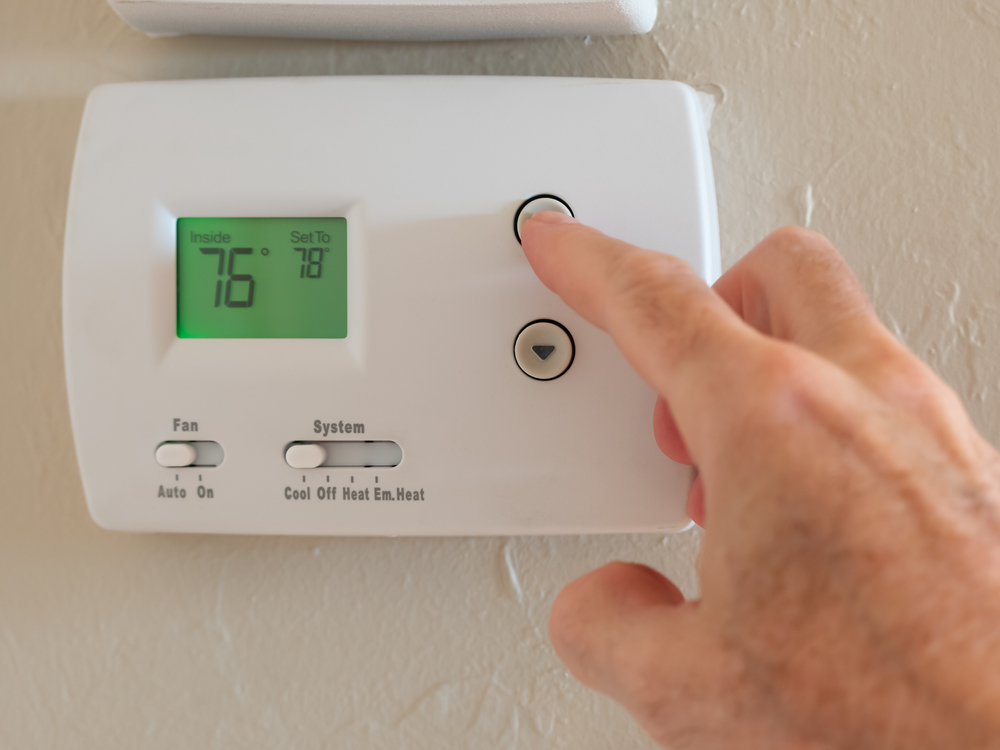
Most people are familiar with the cooling settings of their air conditioning units. After all, this is the reason people have AC. But did you know that some air conditioning units have a dry mode setting? While this may seem unnecessary to some, it’s an important feature you should consider using more often.
If you’re wondering what the dry setting on your AC is, keep reading. We’ll walk you through what this setting is, how it works, and why it can help your home.
Table of Contents
What Is Dry Mode on AC Unit?
Dry mode is a setting on some air conditioning units that can help you reduce the humidity levels in your home. You may see it listed on the thermostat near the settings you’re more familiar with, like “cool,” “heat,” and “auto.”
When you turn on the dry setting on your AC, it will run at a lower speed than when it’s set in cool mode. This lets air pass slowly over the evaporator coil, causing some of the moisture within the air to condense. This process removes moisture from the air and leaves it on the coil. When the air leaves the AC unit and reenters the room, it will be dryer than it was when it entered the unit. This reduces the humidity level in the room.
While this may not seem important at first, it has a significant impact on the way a room feels. That’s because humidity plays a role in how your body experiences heat. If two rooms are at the same temperature but have different humidity levels, you’ll feel cooler in the one with lower humidity. By reducing the humidity in the room, the dry mode setting on your air conditioner makes a room feel cooler.
Do All Air Conditioning Units Have Dry Mode?
Not all air conditioning units have a dry mode. Only systems with a multi-speed compressor offer this feature. This type of AC unit is typically more expensive and not ideal for all homes. You’re more likely to see these models in hot and humid areas like Jacksonville, Florida, since such areas have notoriously high humidity levels.
You can find out if your AC unit features a dry mode by checking your thermostat. If you don’t see it, your specific model likely doesn’t have this feature. The next time you get AC repair, you can double-check with the HVAC technician to see if your unit can run on dry mode.
The Difference Between Dry Mode & Cooling Mode on Air Conditioner
The big difference between dry mode and cooling mode is that cooling mode often reduces the actual temperature in the room. Cooling mode involves passing air over the evaporator coils faster and with more power, creating cool air. When the cooling mode is active, it brings the temperature down to whatever you set the thermostat to.
Dry mode might not change the temperature at all. The thermostat may stay at 70 degrees despite dry mode running. Although the temperature in the room doesn’t change, you’ll still feel cooler thanks to less humidity.
Benefits of Using Dry Setting on Your AC
Why should you bother using dry mode at all? There are a few key reasons to consider it.
A More Efficient System
The most significant reason is that dry mode is more efficient. Dry mode only needs to slowly pass air over the evaporator coils while cool mode needs to pass air over them with more power. When an AC unit runs on dry mode, it uses less electricity than the same AC unit running in cool mode.
This makes dry mode the ideal choice when the weather is humid but not necessarily hot. On these days, you may feel hot even though the temperature isn’t very high. You can run your AC unit in dry mode to cool down. This process uses less energy, which reduces your monthly energy bill.
A Healthier Environment
Dry mode generally leads to a healthier environment, even if you aren’t trying to reduce the temperature in the room. That’s because dry air is generally better than humid air.
Humid air is a common source of many air quality triggers. Humidity can lead to the growth of mold, mildew, and dust mites. As these pollutants multiply, they impact indoor air quality and trigger allergies. Someone in a humid room may have to deal with unpleasant allergy symptoms like sneezing, coughing, wheezing, a runny nose, and more. Meanwhile, someone using dry mode can avoid these problems altogether.
A Safer Home
Humidity doesn’t just lead to air quality problems in the short term; it can cause long-term damage as well. In a humid environment, mold and mildew thrive. If the room stays humid for long enough, these problems can make their way into furniture, clothing, curtains, and even the walls and ceilings of your home. Once this happens, mold and mildew lower the air quality while producing an unpleasant smell.
Running an AC unit on dry mode helps combat these pollutants. It prevents them from forming in the first place. Dry air can even help kill off mold and mildew spores, stopping the problem at its core.
 Expert Air Conditioning Services in Jacksonville, FL
Expert Air Conditioning Services in Jacksonville, FL
If you want to take advantage of the benefits of the dry setting on your AC unit, you need an air conditioner capable of this feature. If you don’t have one already, you’ll need to have an HVAC technician replace your current system.
If this is the case for you, Waychoff’s can help. We’re an HVAC company dedicated to homeowners in Jacksonville, FL, and surrounding areas. We know what residents of this area face when it comes to heat and humidity. That’s how we can meet all their AC needs.
We’ll hook you up with the system your home needs and provide any other HVAC-related services. When it comes to keeping your home cool and dry, don’t just trust anyone; trust Waychoff’s. Schedule a service online today.

